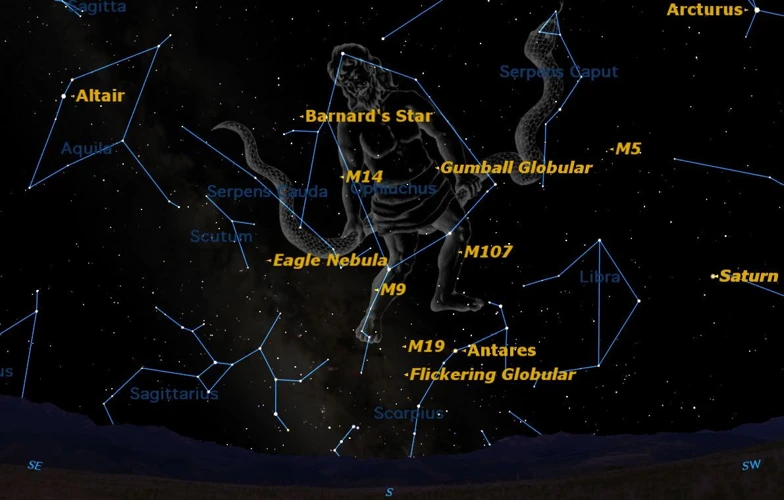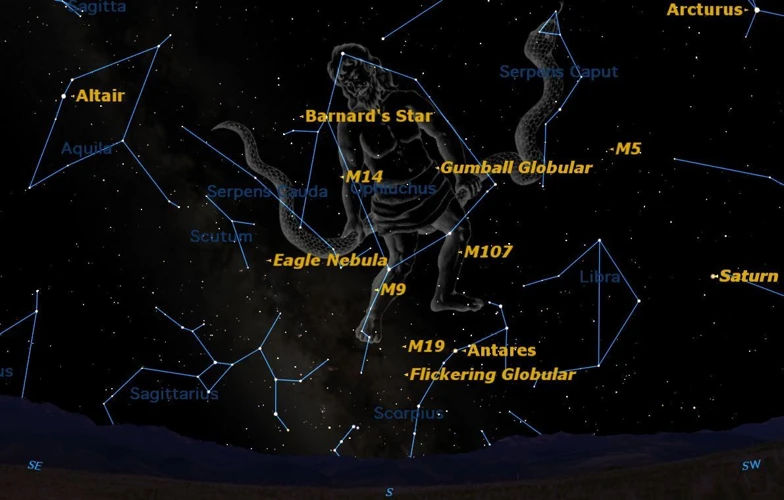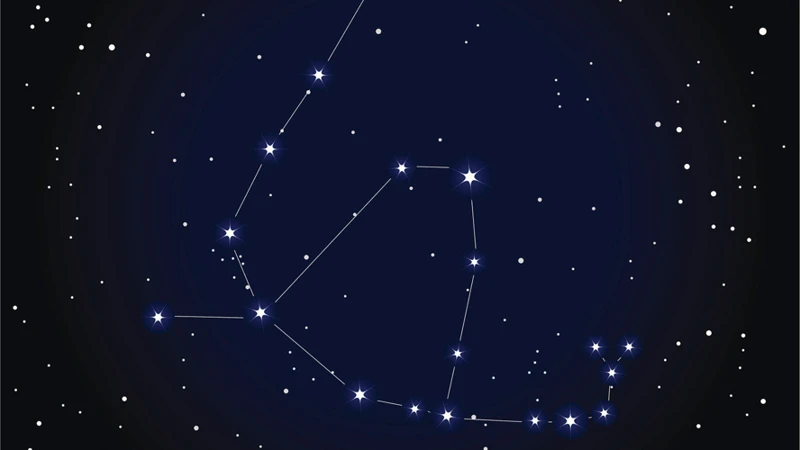Welcome to the fascinating world of constellation naming in the modern era! As technology continues to shape our lives in countless ways, it should come as no surprise that it has also had a profound influence on the way we name and interpret constellations. In this article, we will explore how technology has revolutionized this ancient practice, allowing for new perspectives, collaborations, and discoveries. From the traditional approach rooted in ancient mythology to the changing perspectives and interpretations of today, join us on this journey to understand the dynamic relationship between technology and the naming of constellations.
Contents
- The Traditional Approach to Constellation Naming
- The Role of Technology in Contemporary Naming
- Changing Perspectives and Modern Interpretations
- The Future of Constellation Naming
- Conclusion
-
Frequently Asked Questions
- 1. How were constellations traditionally named?
- 2. Were all constellation names based on Western mythology?
- 3. How did early astronomers contribute to constellation naming?
- 4. Are all constellations we see today still named according to traditional methods?
- 5. How has technology influenced the process of constellation naming?
- 6. Can individuals contribute to constellation naming?
- 7. Has social media impacted constellation naming?
- 8. Are there any new constellations based on scientific achievements?
- 9. Can constellations be named beyond what is visible to the naked eye?
- 10. What does the future hold for constellation naming?
- References
-
Frequently Asked Questions
- How do constellations get their names?
- Has technology influenced the process of naming constellations?
- What role did ancient mythology play in the traditional approach to constellation naming?
- Who were some early astronomers and how did they contribute to constellation naming?
- How have telescopes and sky mapping software influenced modern constellation naming?
- What are collaborative platforms and how do they impact constellation naming?
- What is the influence of social media and internet access on constellation naming?
- How are non-Western traditions and cultures being included in constellation naming?
- How are scientific achievements recognized in constellation naming?
- What can we expect for the future of constellation naming?
- References
- Read More
The Traditional Approach to Constellation Naming

In ancient times, constellations were named according to a traditional approach that was deeply rooted in mythology and cultural significance. Each civilization had its own unique set of constellations, often drawing inspiration from their own myths and legends. For example, the ancient Egyptians associated the constellation Canis Major with the god Anubis, who was believed to guide souls to the afterlife. This connection between mythology and the stars allowed people to not only navigate the night sky but also gain a deeper understanding of their own cultural heritage. Similarly, in Chinese mythology, the constellation Orion represents the god Hou Yi, while the goddess Mazu is associated with the constellation Pisces. These mythological stories provided a rich tapestry of narratives that helped people make sense of the celestial realm.
The Role of Technology in Contemporary Naming

The development of technology has played a transformative role in contemporary constellation naming practices. One of the key advancements is the creation of powerful telescopes that allow astronomers to see the night sky in unprecedented detail. With these telescopes, astronomers can map out the positions and shapes of celestial objects, leading to a more accurate identification and naming of constellations. Additionally, sky mapping software has become an invaluable tool in the process. These sophisticated programs can analyze vast amounts of data, enabling astronomers to precisely identify and name new constellations.
Changing Perspectives and Modern Interpretations

Technology has played a pivotal role in bringing about changing perspectives and modern interpretations of constellation naming. One significant shift has been the inclusion of non-Western traditions and cultures. With the advancement of technology, astronomers and researchers from around the world have been able to contribute their knowledge and cultural perspectives to the naming process. This has led to the recognition and incorporation of constellations from various cultures, such as the inclusion of the Ophiuchus constellation in the zodiac system, which represents a symbol of healing and wisdom in Greek mythology. By embracing diverse perspectives, constellation naming has become more inclusive and representative of the global community.
The Future of Constellation Naming

The future of constellation naming is an exciting realm of possibilities, thanks to advancements in technology. As we continue to push the boundaries of our understanding of the universe, new tools and methods emerge that will shape the way we name and interpret constellations.
Conclusion

In conclusion, technology has had a profound impact on the naming and interpretation of constellations in the modern era. The traditional approach, rooted in mythology and cultural significance, has been complemented and enhanced by the advancements in technology. Telescopes and sky mapping software have allowed astronomers to identify and name new constellations, expanding our understanding of the universe. Collaborative platforms and citizen science initiatives have fostered a sense of community and inclusivity, allowing for diverse perspectives and contributions in constellation naming. The rise of social media and internet access has facilitated the sharing and dissemination of information, democratizing the process of naming constellations and engaging a wider audience. Moreover, there is a growing recognition of non-Western traditions and cultures, leading to more inclusive and global interpretations of constellation naming. The scientific achievements and discoveries made beyond the visible spectrum have also influenced how constellations are named, reflecting our evolving understanding of the universe. Looking ahead, advancements in virtual reality, augmented reality, artificial intelligence, and interstellar exploration hold the promise of further revolutionizing constellation naming in the future. As technology continues to advance, our appreciation and interpretation of the night sky will continue to evolve, connecting us to the wonders of the cosmos.
Frequently Asked Questions

1. How were constellations traditionally named?
Constellations were traditionally named based on mythology and cultural significance. Ancient civilizations associated the patterns in the stars with their own cultural stories and legends, creating a deep connection between the celestial and earthly realms.
2. Were all constellation names based on Western mythology?
No, not all constellation names were based on Western mythology. Different cultures around the world had their own unique constellations and naming conventions. For example, Chinese mythology influenced the naming of constellations in China.
3. How did early astronomers contribute to constellation naming?
Early astronomers played a vital role in mapping and identifying constellations. They provided a standardized system for naming and cataloging the stars, contributing to the accumulation of astronomical knowledge over time.
4. Are all constellations we see today still named according to traditional methods?
No, modern interpretations have expanded beyond traditional methods of naming constellations. New constellations have been defined, and there is a growing trend towards inclusion of non-Western traditions and cultural perspectives.
5. How has technology influenced the process of constellation naming?
Technology has revolutionized the process of constellation naming. Telescopes, sky mapping software, and collaborative platforms have enabled more accurate identification and naming of constellations. Technology has also facilitated the sharing of information and collaboration in the scientific community.
6. Can individuals contribute to constellation naming?
Yes, individuals can now contribute to constellation naming through citizen science initiatives and collaborative platforms. These platforms allow amateur astronomers and enthusiasts to propose new names or interpretations for discovered celestial features.
Social media has had a significant impact on constellation naming. Platforms like Twitter, Instagram, and Facebook have allowed for the rapid dissemination of information, making it easier for astronomers to share their discoveries and propose new names for celestial objects and features.
8. Are there any new constellations based on scientific achievements?
Yes, modern constellation naming increasingly recognizes scientific achievements. For example, the constellation Ophiuchus, representing the serpent-bearer, is associated with the celestial equator and symbolizes the achievements of ancient astronomers who made significant contributions to the field.
9. Can constellations be named beyond what is visible to the naked eye?
Absolutely! With advancements in technology, astronomers can now observe celestial objects beyond the visible spectrum. This has opened up new possibilities for naming constellations based on discoveries made through radio waves, X-rays, and other non-visible wavelengths.
10. What does the future hold for constellation naming?
The future of constellation naming looks incredibly exciting. Advancements in virtual reality and augmented reality may soon allow us to experience constellations in immersive ways. Additionally, the integration of artificial intelligence in astronomy could enhance our understanding and interpretation of the stars. With the prospects of interstellar exploration and collaboration, there may be entirely new constellations waiting to be discovered in the future.







